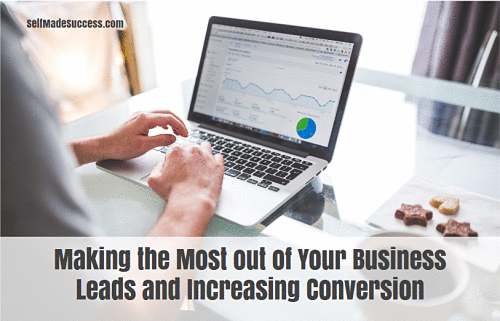
Lead conversion is a complex multi-step process that can often be frustrating. Leads must first be converted to prospects.
Then it must be determined how many of those prospects have both the need for your goods and services – and the ability to pay for them.
Finally, it requires providing enough value, information and encouragement for them to feel good about making a purchase.
These steps must all be accomplished while maintaining the delicate balancing act between too little and too much customer contact.
That's why it's important to develop a marketing plan that increases conversion and reduces frustration. There are a few useful tools you can use to develop a plan that does both.
A/B Testing
One of the most important elements of any effective marketing plan is a thorough understanding of your current customers' needs.
One of the drawbacks of big data and statistics is that it can lead to stereotyping and assumptions. While your customers may share a demographic, like people, demographics change. That's why listening is such an important business skill.
A/B testing is a form of listening, in that you provide customers with choices regarding the way your information is presented.
Their responses provide valuable feedback about their personal preferences. The testing is done by creating alternate versions of a web page using different headlines and images with each containing a call to action.
The software directs half of the web traffic to one, and half to the other. The page with the greatest number of conversions reveals which presentation style and content more people prefer.
Ideally, every potential website update should be tested. Optimizely is A/B testing software with a reputation for being user-friendly. Another popular option is Visual Website Optimizer.
Their prices are affordable enough even for small business owners.
Vital Elements of an Effective Website
The most important element of any website is credibility. Including links to testimonials, awards, and citations is a great way to increase credibility.
Reputations are affected by association, so it's equally important that any links to other companies or sources included on your website reflect the image that you want your own company to portray.
The more detailed information about your products and services you include on your website, the better.
Well-written products descriptions, sharp images, and video demonstrations are all more effective when combined. Never be afraid of adding too many details in your written descriptions.
While studies show that 79% of people won't read it all, 16% will, and once they have, it's that well-informed 16% that are most likely to make a purchase.
Employee bios and photos can increase credibility by showing your company's human side. In an increasingly technological and impersonal world, that's something many customers appreciate.
Finally, updating your website regularly is a must. Customers view regular updates as a reflection of a company's level of commitment.
Related: Email Marketing Best Practices – The Top 15 For 2016
Social Media
An article in Forbes points out that one of the benefits of using social media to convert leads into prospects is it does a certain amount of conversion tracking for you.
This is especially true for simple online retail sales. For other types of businesses, like hire/rental and B2B companies, conversions are defined differently using a two-step paradigm, since the final sale is often made offline.
An example of a first-step conversion would be filling out the online contact form. These exceptions provide a good illustration of the importance of following up on every lead.
Facebook and Twitter both provide an ideal space for creating business profiles with space for powerful images that reflect your products and services.
Those profile pages are a great platform to insert promo codes for visitors. By creating separate promo codes for each social media site, you can effectively determine which site results in the most conversions and allocate your advertising efforts accordingly.
Rather than just a link to your website, your social media landing pages should contain a call to action and an easy way to immediately answer that call.
A recent Huffington Post article put incentives at the top of the list of effective conversion tools. Promo codes are good incentives, but making your customers shopping experience as educational and enjoyable as possible is the best one.
FREE VIDEO COURSE:
"How To Make $10,000 Per Month Online"
We'll go over exactly how you can copy our simple, online business model that has made $10,000+ per month for countless people.
